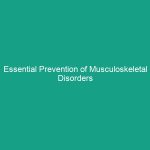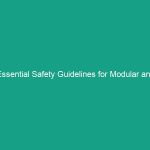Introduction
Good morning team! Today, we’re diving into an important topic that affects all of us at work: safety glasses. Our focus will be on the Essential Safety Glasses Guidelines: Avoid Risks and Protect Your Vision. Wearing appropriate Safety glasses isn’t just a recommendation; it’s a crucial part of keeping our eyes safe from potential Hazards. Understanding and following these guidelines can help prevent injuries and ensure that we can all continue working safely and effectively.
Understanding Essential Safety Glasses Guidelines
So, what exactly are the essential safety glasses guidelines? These are a set of practices and Regulations designed to ensure that workers who are exposed to various Hazards—such as flying debris, chemical splashes, or harmful radiation—wear the right protective eyewear to safeguard their vision. When we think about the importance of these guidelines, it goes beyond just compliance; it’s about protecting one of our most valuable assets—our eyesight.
Many employees may believe that wearing regular glasses or sunglasses is sufficient for Eye Protection. However, this is a common misconception. Regular eyewear does not provide the same level of protection against workplace hazards. Safety glasses are specifically designed to withstand impact, resist chemicals, and provide a seal against dust and debris.
Key Hazards, Risks, and Safety Considerations
There are numerous hazards in the workplace that can pose a risk to our vision. Here are some of the most common:
- Flying Debris: This can occur in construction or manufacturing environments where tools or materials may chip or break.
- Chemical Splashes: In laboratories or industrial settings, chemicals can splash and cause serious eye injuries.
- UV Radiation: Workers who are exposed to sunlight without proper eye protection may suffer from long-term eye damage.
- Dust and Particles: In environments like woodworking or metalworking, fine particles can irritate or damage the eyes.
Ignoring safety glasses guidelines can lead to severe consequences, including temporary or permanent vision loss. It’s essential to recognize these risks and take the necessary Precautions to protect ourselves and our colleagues.
Best Practices, Procedures, & Actionable Advice
Now that we understand the risks, let’s discuss the Best Practices for using safety glasses:
- Choose the Right Safety Glasses: Ensure that the safety glasses you select are appropriate for the hazards you may encounter. Look for ANSI Z87.1 certification, which indicates they meet safety Standards.
- Inspect Your Eyewear: Before each use, check your safety glasses for any signs of damage, such as cracks or scratches. Damaged eyewear should be replaced immediately.
- Wear Them Consistently: Make it a habit to wear safety glasses whenever you are in an area with potential hazards, even for short tasks.
- Keep Them Clean: Clean your safety glasses regularly to ensure clear vision. Use appropriate cleaning solutions and cloths to avoid scratching the lenses.
- Store Properly: When not in use, store your safety glasses in a protective case to prevent damage.
Let’s consider a real-world incident for better understanding. In a manufacturing plant, an employee neglected to wear safety glasses while operating a machine. A small piece of metal flew off, hitting the employee in the eye and resulting in serious injury. This incident could have been avoided had the employee adhered to the essential safety glasses guidelines.
Regulations, Standards, and Compliance
Compliance with safety regulations is crucial for protecting employees and maintaining a safe working Environment. In the United States, the Occupational Safety and Health Administration (OSHA) sets forth regulations regarding the use of Personal Protective Equipment, including safety glasses. Specifically, osha requires that employers assess the workplace for hazards and provide appropriate eye protection.
In addition to OSHA guidelines, many companies have their specific safety policies that align with industry standards. It’s our responsibility to be familiar with these regulations and ensure we comply. Remember, adherence to safety standards not only protects you but also your coworkers.
Employee Engagement & Discussion
Now, let’s take a moment to think about our experiences. Have any of you encountered situations where safety glasses were not used? What challenges did you face regarding eye protection in your work? Sharing our experiences can help us learn from one another and improve our safety practices.
Conclusion & Key Takeaways
In summary, the Essential Safety Glasses Guidelines: Avoid Risks and Protect Your Vision are vital for ensuring our safety at work. Key points to remember include:
- Always choose the appropriate safety glasses for your work environment.
- Inspect, clean, and store your eyewear properly.
- Comply with safety regulations and company policies.
Let’s prioritize our safety and the safety of our teammates by taking these guidelines seriously. Thank you all for your attention and dedication to maintaining a safe workplace. Remember, protecting our vision is protecting our future!


